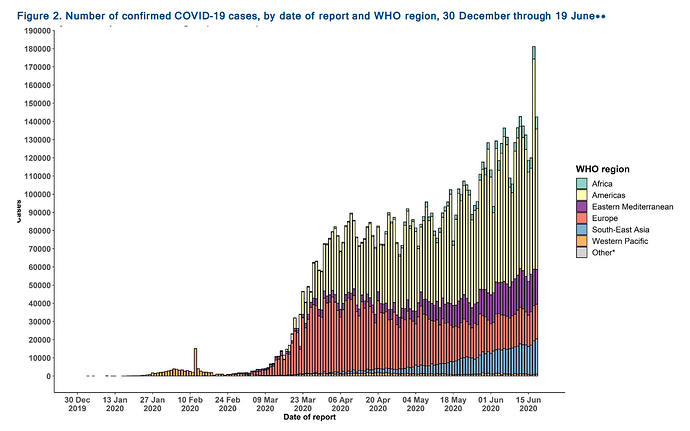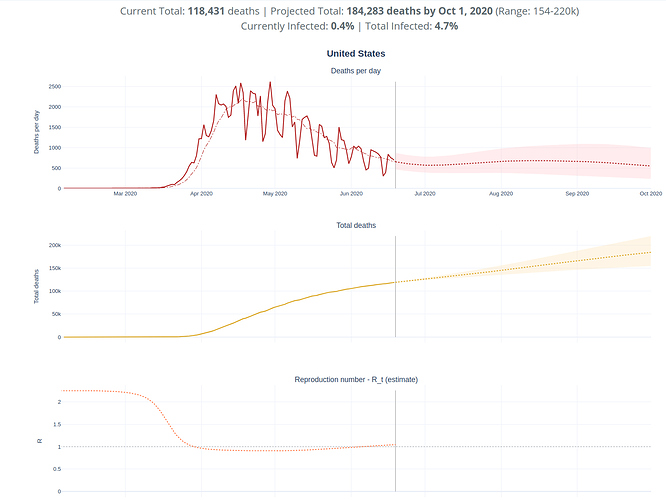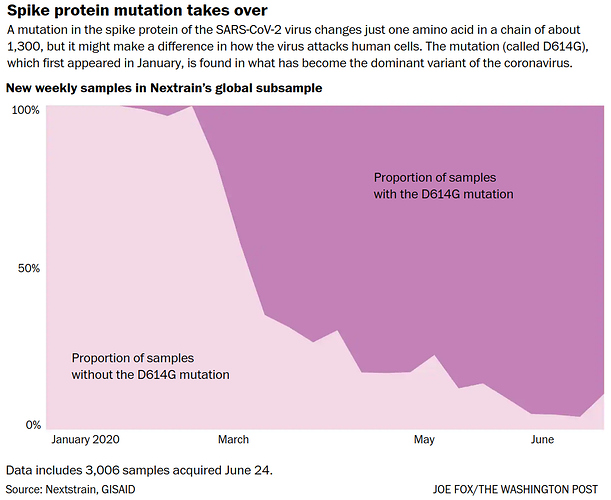(The Guardian, June 25, 2020):
“I’m a viral immunologist. Here’s what antibody tests for Covid-19 tell us -
From serology to T-cells, there’s still a lot we don’t know
about how immunity to coronavirus works”
… antibodies to Sars-CoV-2 show that you have been infected, although people with other recent coronavirus infections (which includes some common colds) may have cross-reactive antibodies, giving false positives. Serology tests vary in accuracy, but are more effective than so-called polymerise chain reaction (PCR) tests, which detect the presence of the virus itself. One reason is that they rely less on the skill of the person doing the sampling: antibodies in the blood are easier to detect than virus particles in nose or throat swabs. Such tests provide useful information about the way an infection has spread through a population. Newly infected people are unlikely to have detectable antibodies during the first few days, but most develop them after 1 to 3 weeks. Knowing how many have become infected helps us estimate the % of severe cases and deaths more accurately, and this tells us more about just how dangerous the new pathogen might be.
It also helps us identify high-risk groups, which can offer clues as to how the virus may be transmitted. Take Richter’s study, in which she tested 516 healthcare workers for Covid-19 antibodies: 34% of housekeeping staff came back positive compared with only 15% of staff working in intensive care. Such insights can be used to shield vulnerable groups with protective interventions. Antibodies also offer hope for future protection - but we have yet to fully characterise what immune protection from Covid-19 might consist of.
There are two major types of “memory” immune responses - changes to the body that mean you are able to recall a previous threat in order to mount a rapid protective response on reinfection. The first is driven by B cells, which produce antibodies. Vaccine research aims to generate potent, long-lasting antibodies that can protect us for life, but this is not always achieved. When antibodies wane, booster vaccinations can help. When viruses evolve to escape detection, like the fast-mutating flu, a newly designed vaccine is needed to stop them in their tracks.
The second cell type able to remember an infection is the T cell. T cells may be sufficient to control infection in the absence of antibodies, and act by organising immune defences (so-called “helper” T cells) or directly killing infected cells to restrict new virus production (cytotoxic T cells). T cell responses have been detected in most Covid-19 patients, and first-in-human vaccine trials have reported potent T cell activation. It is possible that T cells’ memory of Sars-CoV-2 may last longer than antibodies, as is the case in other coronaviruses.
Can you develop a T cell response without developing antibodies? That seems to be a possibility: a small study of patients and their families shows an unexpected 6 out of 8 family members who caught the virus at home had T cell responses but no detectable antibodies. Currently there isn’t an off-the-shelf test to measure our T cell responses, and they do not show up in antibody tests. But then even a positive antibody test, at this stage, doesn’t tell us all that much about protection. The duration of any potentially protective immunity remains to be determined. …
… a study that followed up 37 asymptomatic people who had positive PCR tests. This showed they had detectable levels of the virus for longer that those who had symptoms. Asymptomatic people are therefore likely to be more contagious. We also know that pre-symptomatic people, those in the early days following infection with Sars-CoV-2, are also highly contagious. …
… The first data emerging from vaccine studies show that animals can be protected from Sars-CoV-2 infection, and people do develop hallmarks of protective immunity. This hints that immunological memory is possible. The only way to know for sure, though, is to measure what happens when vaccination volunteers become infected.
.
(The Guardian, June 25, 2020):
“Antibody test accuracy lower during first 14 days of Covid-19 symptoms -
Review reports 30% of people picked up by tests in first week
against 90% in third week”
Timing is crucial when it comes to antibody tests, experts have said, after a review of studies found their accuracy is far lower if used within the first fortnight of coronavirus symptoms rather than a week or two later. … At present, however, it is not clear what a positive antibody test means in terms of immunity, a key issue for “immunity passports”.
Now a team of researchers has delved into the issue of antibody tests, releasing a Cochrane review, considered to be the gold standard when it comes to weighing up evidence. The team examined 54 studies of antibody tests carried out on about 16,000 samples, more than half of which were from Covid-19 cases. All the studies were reported before the end of April, and most were carried out in Asia. The review highlights the fact that such studies were often problematic, with many failing to give clear details about the actual number of patients involved, or the test used. Several only including participants who actually had Covid-19. What’s more, 44 of the studies only trialled the antibody tests on people who had been admitted to hospital. …
… When carried out in the first week of a patient having symptoms only about 30% of people with Covid-19 were picked up by tests for two main types of antibodies, rising to about 70% between eight to 14 days after the onset of symptoms. From two weeks after symptoms began the figure was about 90%. Only 1% to 2% of people without Covid-19 received a positive result from antibody tests. But there is another issue. “We don’t really know very much about the accuracy of these antibody tests after the first five weeks of the disease,” said Deeks. …
… Eleanor Riley, a professor of immunology and infectious disease at the University of Edinburgh, who was not part of the review team, agreed that timing matters. “It is already very clear from this analysis that antibody testing early in the course of disease is unreliable and thus antibody tests cannot, and should not, replace virus detection for diagnosis of acute cases except where the time-course of disease is already well advanced,” she said. “The data also make it very clear that most, if not all, commercially available tests are not sufficiently accurate to warrant their use outside of the healthcare setting.”






